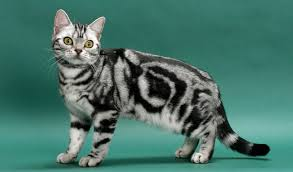Cats and Primordial Pouches
Does your favorite feline have a belly that sways from side to side? Could it be … fat?
According to veterinarians, it’s not fat at all! It’s a primordial pouch: a loose flap comprised of a mixture of fat, skin and fur on the underside of a cat that hangs between her midsection and hind legs and feels floppy to the touch. Although it may look as if an overweight cat who recently lost weight retained the extra skin, that so-called extra skin has less to do with her condition and more to do with genetics.
While all cats have primordial pouches, they vary in size depending on each individual kitty. Cats start developing these telltale stomach pouches during kittenhood, usually around 6 months of age. And, perhaps most fascinating of all is the fact that “big cats” a.k.a. lions and tigers have them as well!
(Above picture courtesy of Freepik.com)
Even experts can only theorize as to the purpose of these legendary pouches. Protection: a primordial pouch might shield a cat’s vital organs during rough activities and/or fights. Flexibility: it might allow a cat’s abdomen to stretch during movement, making her even more agile. Food storage: it might help accommodate larger meals when she eats a great deal at once. Heat regulation: it might be of assistance in temperature control by allowing air to circulate more effectively. Then again, the primordial pouch may merely be an evolutionary trait left over from a cat’s wild ancestors.
No matter how large or small your own kitty’s swaying belly flap is, having a primordial pouch isn’t an indication of her overall health or whether she’s either underweight or overweight. Like people, a cat’s skin tends to sag, stretch and lose elasticity with age, leading inevitably to a belly that seems to sway more as she matures into a senior cat.
If you’re still unsure as to whether you’re seeing your kitty’s primordial pouch or fat, consider the following advice to help you differentiate between the two. Focus less on the size of your cat’s belly flap and more on her body condition score (BCS), a visual tool used by veterinarians to determine if a cat is at her ideal weight. Begin by looking down at her from above. Healthy cats will have noticeable waistlines whereas overweight ones won’t.
Then, run your fingers gently across her ribs. If she’s at an ideal weight, her ribs should feel similar to when your knuckles are being rubbed on an open palm. If she’s overweight, you’ll feel a pronounced layer of fat covering her ribs. If she’s underweight, however, her ribs may feel prominent, much the way the backs of your knuckles feel when you make a fist.
While helping your cat shed some excess pounds won’t make her primordial pouch smaller, helping her maintain a healthy weight through a balanced diet and regular exercise will help prevent an accumulation of unwanted fat. If, however, you’re either uncertain as to whether your cat’s at a healthy weight or want advice to help her reach her ideal weight, reach out to your vet.
______________________________________________________________________
Cat Tale stories are written by Nomi Berger who is the bestselling author of seven novels, one work of non-fiction, two volumes of poetry, and hundreds of articles. She is a volunteer writer for Furry Friends in Vancouver, WA and also volunteers her writing skills to animal rescue groups in Canada and the USA. For more information about Furry Friends visit www.furryfriendswa.org or contact them at information@furryfriendswa.org or (360) 993-1097
More Cat Tale stories can be found on the Columbian Newspaper’s website at https://blogs.columbian.com/cat-tales/ The Columbian has hosted the Furry Friends Cat Tale stories from 2015 to August 29, 2025.


